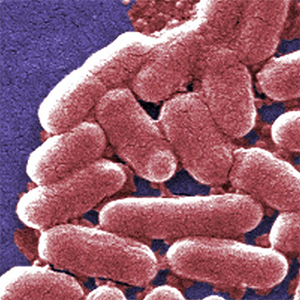Atmosferic pressure non-thermal plasma: Preliminary investigation

Accepted: 1 September 2022
HTML: 16
All claims expressed in this article are solely those of the authors and do not necessarily represent those of their affiliated organizations, or those of the publisher, the editors and the reviewers. Any product that may be evaluated in this article or claim that may be made by its manufacturer is not guaranteed or endorsed by the publisher.
Authors
Antibacterial activity of atmosferic pressure non-thermal plasma (APNTP) was assessed for bacterial, yeast and mold strains. This investigation is to be considered preliminary: a second step is envisaged in which the efficacy of the technique and the device will be assessed directly on food of animal and plant origin. The strains (ATCC or wild type) of Listeria innocua, Escherichia coli, Salmonella thyphimurium, Pseudomonas aeruginosa, Staphylococcus aureus, Enterococcus faecalis, Proteus mirabilis (bacteria); Alternaria alternata, Aspergillus flavus, Cladosporium herbarum, Fusarium graminearum, Geotrichum candidum, Penicillium roqueforti, Rhizopus nigricans (moulds); Candida parapsilosis and Candida albicans (yeasts) were subjected to plasma plume generated by the action of electric fields with a gas mixture (oxygen and helium) delivered for 5 min at a distance of 2 cm. Types of experiments were listed as following: microorganism at concentration 1×108 and 1×104 cfu on PCA (Plate Count Agar); Listeria innocua and Salmonella thiphymurium at concentration 1×104 cfu on semi-synthetic and synthetic medium; mycetes (moulds and yeasts) at concentration 1×108 and 1×104 cfu on SDA (Sabouraud Dextrose Agar). The results obtained on the bacteria subjected to atmospheric cold plasma were evident on all the strains tested except for Proteus mirabilis (1×108 cfu), most evident at a concentration of 1×104 cfu, not only on culture media PCA but also on semi-synthetic medium and jelly meat-PCA medium. In spite of bacterial results, treatment with plasma plume did not decrease or inhibit of fungal growth. That means plasma plume was neither fungicidal nor fungistatic activities.
Supporting Agencies
NoneHow to Cite

This work is licensed under a Creative Commons Attribution-NonCommercial 4.0 International License.
PAGEPress has chosen to apply the Creative Commons Attribution NonCommercial 4.0 International License (CC BY-NC 4.0) to all manuscripts to be published.

 https://doi.org/10.4081/ijfs.2022.10043
https://doi.org/10.4081/ijfs.2022.10043



